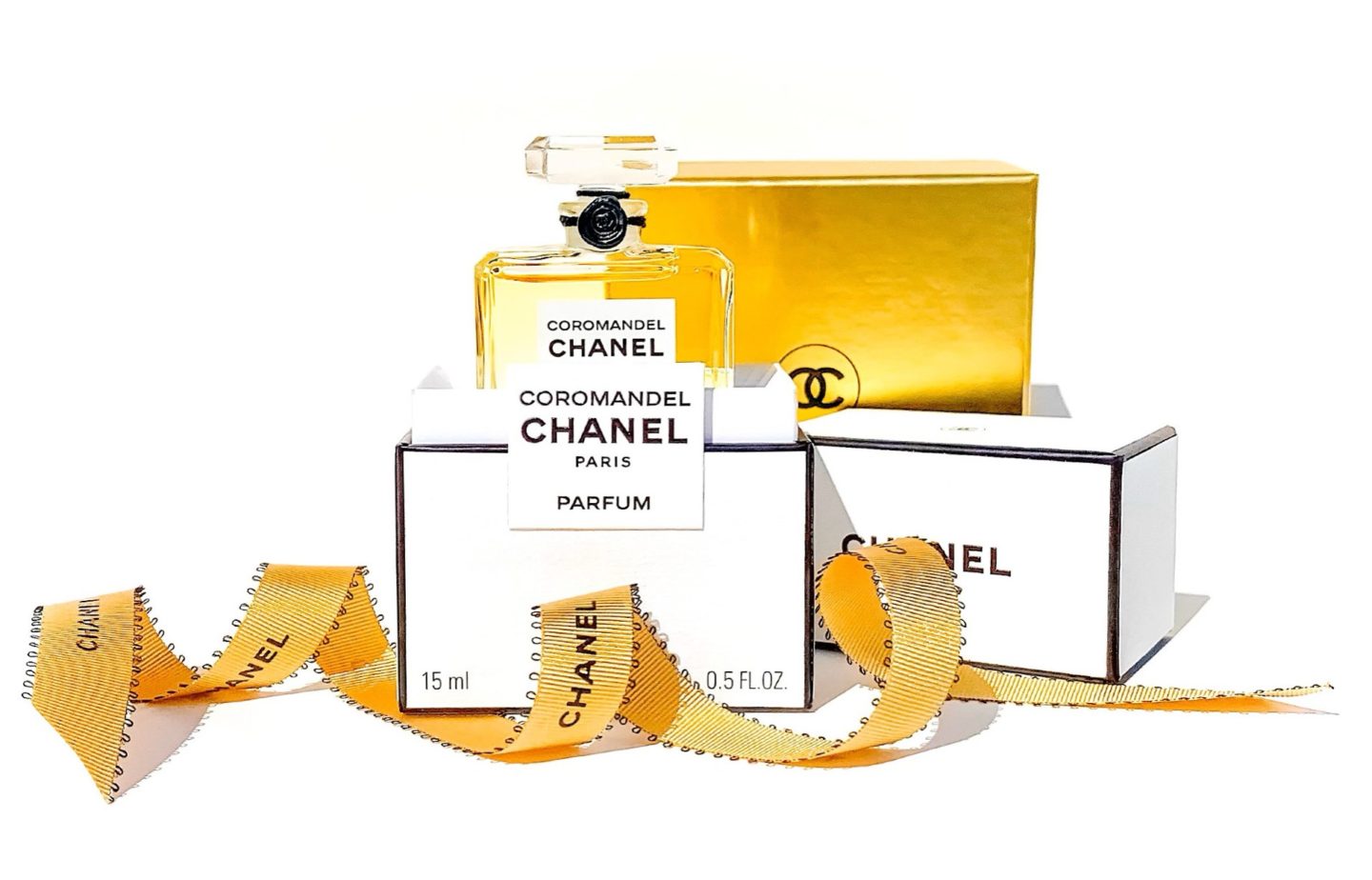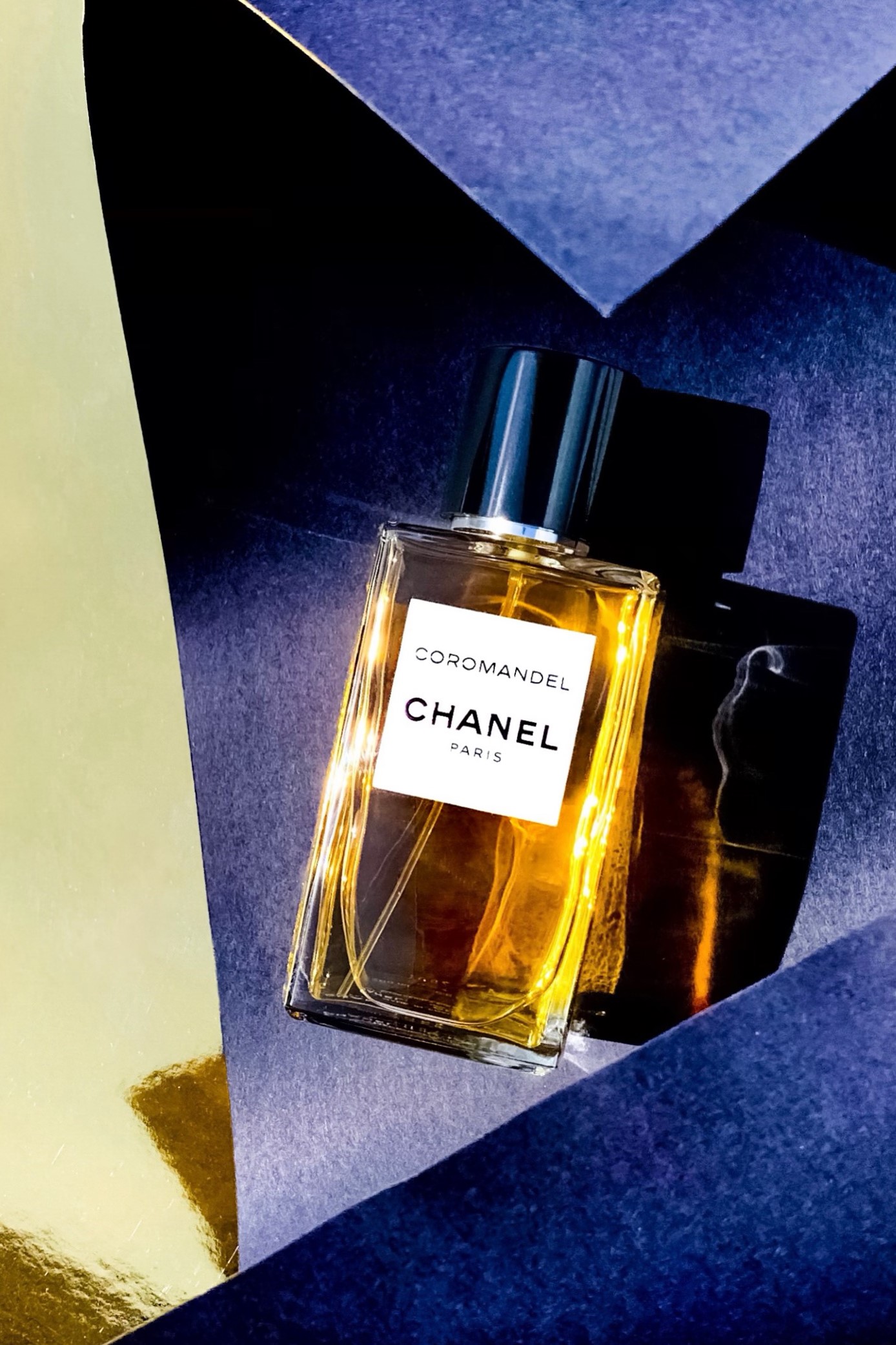From discovering inspiration in the Russian taste for the baroque to seeking solace in neo-Byzantine Venice and procuring materials, perfume or otherwise, from the Far East, Gabrielle “Coco” Chanel adored exoticism. The grandeur and mystique of the exotic being so removed of her own austere upbringing as a ward of the nuns of Aubazine Abbey, Coco found solace in surrounding herself with all things exotic; Japanese porcelain, Byzantium lion statuettes, Javanese wall-hangings, ancient Greek busts and Gandharan buddhist statuary, but nothing more so than Chinese Coromandel screens. Evidenced by these seemingly countless lacquered screens that line the walls, disguise doors and divide rooms in her sumptuously decorated 31 Rue Cambon apartment, Coromandel screens were an intimate part of Coco’s life after buying her first at just eighteen years old.
Enchanting in their orientalism, the dark lacquered wood of Coromandel screens, unique luminescence of their aged varnish, and the exceptionally elaborate and meticulous detailing of their ornamentation not only caught Coco’s scrupulous eye, but also left a lasting impression on all who found themselves a guest of Mademoiselle Chanel or visitor of her apartment in the decades since her passing. Himself taken by the beauty of Coco’s vast collection on a visit to her apartment, Jacques Polge, now former Chanel in-house perfumer, crafted Coromandel for the Les Exclusifs de CHANEL collection in 2007 as an homage to these luxuriant lacquered, wooden folding screens. The result, a dark and warmly hued oriental perfume of baroque opulence and magnificent presence.
For a perfume as complex as Coromandel, CHANEL’s notes list is ludicrously succinct, listing only:
patchouli, frankincense and benzoin
In reality, it must be something closer to this:
bitter orange, bergamot, neroli, jasmine, rose, patchouli, orris, vetiver, sandalwood, incense, frankincense, white chocolate, benzoin, musk, vanilla, labdanum
Beyond just her affinity for Coromandel screens, Coromandel pays homage to Mademoiselle Chanel’s broader fascination for the exotic by placing at its heart two trade route commodities; patchouli and frankincense. Patchouli, a leafy shrub with camphorous woody character once traded through India’s Coromandel Coast on its journey from the East Indies to Europe is rendered dark and dusty in Coromandel, not at all dank and bitter like it so often is. Equally, frankincense, the revered resin burned for millennia for kings and gods alike affords Coromandel a depth of quiet exoticism that is key to the composition’s success. Employed in seemingly equal proportion to the patchouli, the thick, smoky, burning incense character of frankincense lends polish to patchouli’s characteristic earthen roughness.
An immediate burst of neroli and dazzlingly citrus – pithy bitter orange, bergamot and candied citrus peels – open Coromandel, their brilliance akin to light catching the gleaming varnish of Coco’s own Coromandel screens. Behind this varnish though, patchouli establishes an increasing presence; dark, heavy and rough-edged as it is in raw form, this woodsy patchouli together with a soupçon each of vetiver and sandalwood form the woody base upon which Coromandel is built – a foundation to be etched, inlaid and embellished, as are the screens. The first embellishments to this base are the frankincense and orris, together polishing the patchouli of any roughness, rendering it dusty and less musty as its sweet woody facets are amplified.
Past the top notes, jasmine and rose make for iridescent embellishments against the patchouli and frankincense while incense and benzoin gild the composition to simultaneously brighten and make it even more complex, here fully revealing the masterful trompe-l’œil structure of Coromandel. Seemingly layered between the patchouli-frankincense accord and the floral-resin trappings of the heart, a luxuriously velvety pairing of vanilla bean and moreish, creamy white chocolate lend contrast to the citrus and neroli still present though hiding in the depths of the composition. Later, into the quasi-gourmand oriental base, the patchouli and frankincense turn warmer against vanilla bean, labdanum and musk, again darkening the composition, mellowing those once brilliant olfactory embellishments of the heart.

And then, as if Coromandel didn’t already exude a lavish enough sense of finesse, in 2019 it was introduced in Extrait de Parfum concentration, rendering it richer, more luxurious than ever. Omitting the searing citrus opening and gourmand vanilla bean-speckled white chocolate accord of the Eau de Parfum, the Extrait wears even more opulently with softer, dustier patchouli, more abundant frankincense and benzoin atop a positively lustrous base of amber-burnished labdanum. Utter luxury.
Coco Chanel was quoted as saying she nearly fainted with joy when she saw a Coromandel screen for the first time. My reaction was the same when I first smelled Coromandel way back in 2007; its intricately worked composition of dark patchouli, golden hued resins, decadent white chocolate and sparkling citrus is as beautiful as any of the Coromandel screens I saw hanging in Coco’s apartment on my visit.
A sumptuous quasi-gourmand oriental masterpiece, Coromandel is grand beyond its years; this old soul grandeur key to the awe-struck compliments it garners from both sexes.
Year of Release: 2007
Perfumer: Jacques Polge & Olivier Polge
Alternatives: CHANEL Coco Noir, Serge Lutens Bornéo 1834, Mugler Alien
Available: CHANEL boutiques and www.chanel.com from $285, 75ml


Beautifully described Nicholas, and you’ve got the Parfum! Is it in boutiques now?
Author
Jon, not quite yet. The Parfum will be in boutiques on November 03 here in Australia.
Great description! Coromandel is my favorite Chanel, elegant patchouli with Chanel’s DNA!
Author
Tereza, it is my all time favourite patchouli. Patchouli isn’t a favourite note of mine, but Coromandel’s Chanel DNA and that added finesse of frankincense render it perfect.